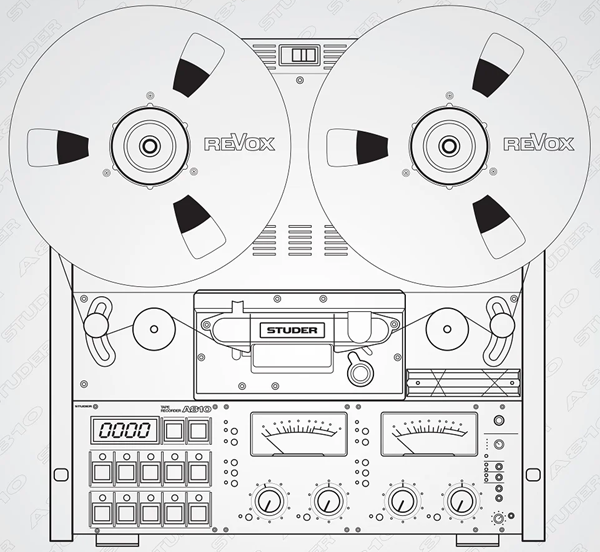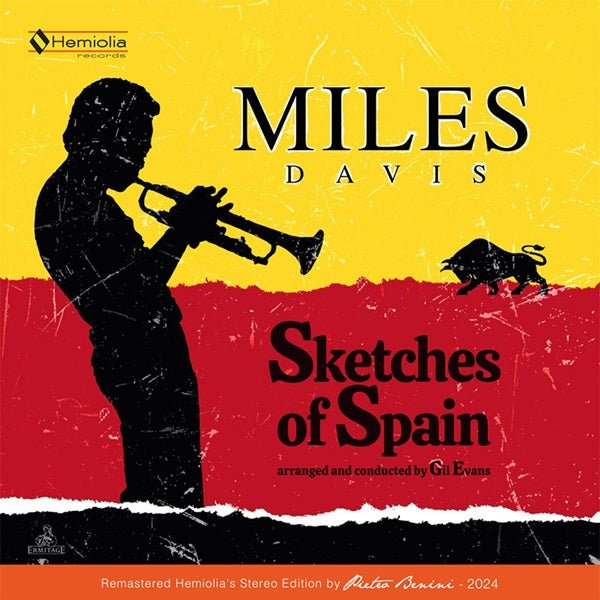Hemiolia Records introducing iconic new tape album title. Sketches of Spain is an album by Miles Davis, recorded between November 1959 and March 1960 at the Columbia 30th Street Studio in New York City.
Sketches of Spain, Miles’ third project with arranger Gil Evans, was the second in the one-two knockout punch that catapulted the trumpeter from the jazz world to mainstream adulation as the 1960s opened. The pinched, lonely sound he effected on his trumpet was the perfect fit for the traditional Spanish melodies interpreted by a well-rehearsed brass ensemble. The combination created a timeless tapestry of Iberian sounds, exotic and earthy, yet somehow familiar to American ears.
In his autobiography, Miles explained the paradox at the heart of Sketches of Spain. “You’ve got all those Arab music scales up in there, black African scales that you can hear. . . there was a little bit of the same thing, the same kind of voice that I played on the trumpet in “Solea” [on Sketches of Spain]. “Solea” is a basic form of flamenco . . . It’s close to the American black feeling in the blues. It comes from Andalusia, so it’s African-based.”
The roots of Sketches of Spain stretch from multiple sources: the “Flamenco Sketches” track from its immediate predecessor, Kind of Blue, which leaned heavily on the Iberian flavor of the Phrygian mode employed in the tune. There was help from inside Columbia Records: George Avakian, who produced Miles as well as an ethnic music series directed by legendary ethnomusicologist Alan Lomax, had previously provided Gil Evans with a set of Flamenco recordings with the hope that it might inspire the arranger. Miles himself credited the actress Beverly Bentley for turning him onto Joaquin Rodrigo’s “Concierto De Aranjuez”—as well as a flamenco concert to which his wife Frances Taylor had taken him.
The result was as majestic as it was mysterious. Evans took apart and reassembled the music like a master jeweler carefully crafting the perfect setting for the jewel that was Miles’ mature trumpet sound. Besides the adagio from “Concierto,” he borrowed “Will O’ The Wisp” (originally “Canción del fuego fatuo”) from Manuel de Falla’s gypsy ballet El Amor Brujo, and adapted three folk tunes originally recorded by Lomax: a Galician panpipe aria “The Pan Piper,” an Andalusian melody “Solea,” and the ritual chant “Saeta,” normally sung to the accompaniment of brass bands during Holy Week in Seville.
The sessions turned into a Herculean effort that lasted from November 1959 to March of the next year. Rehearsals followed rehearsals which led to take after take in the studio, with Evans exercising an exacting approach to every passage. At one point a tuba player kept delaying the process by listening to a ballgame on his portable radio; critic Nat Hentoff attended and chronicled for Stereo Review. Sketches was the extreme opposite of the spontaneous, one-take approach of Kind of Blue. The lightness of the former session, evident in Miles’ jovial studio chatter, disappeared when faced with Evans’ perfectionism, as well as that of the producer Teo Macero, helming a Davis session for the first time.
After the last session of three ended in March 1960, Miles who had not curtailed his touring, performing in and out of New York between the recording dates—recalled, “After we finished working on Sketches of Spain, I didn’t have nothing inside of me. I was drained of all emotion…” He had given his all and Sketches remains the enduring evidence of that effort.















